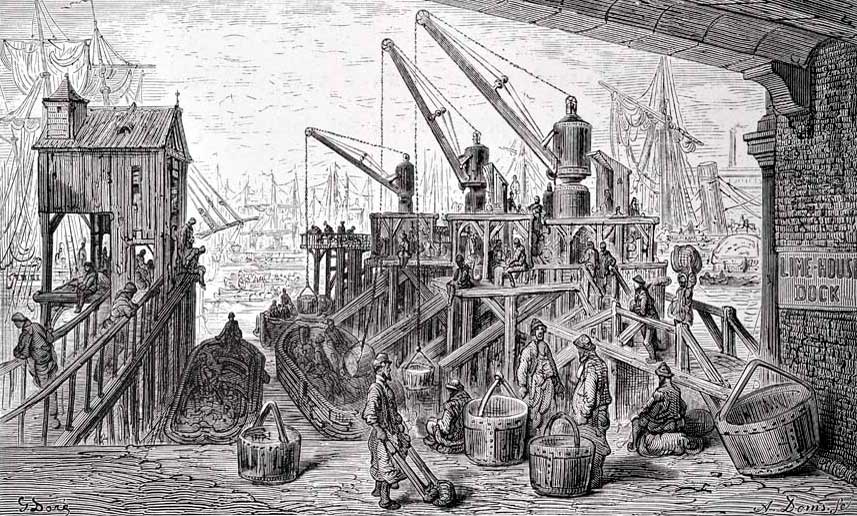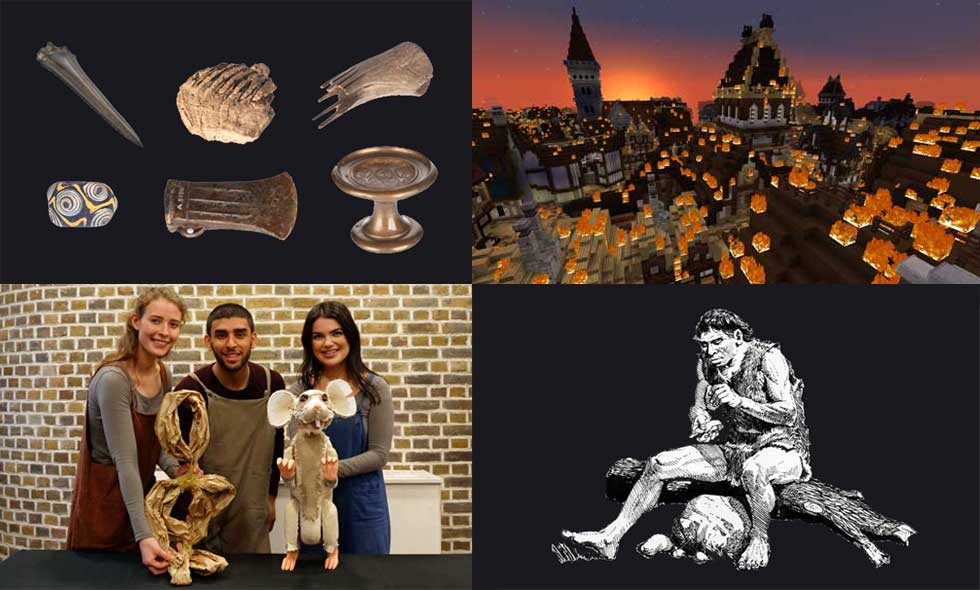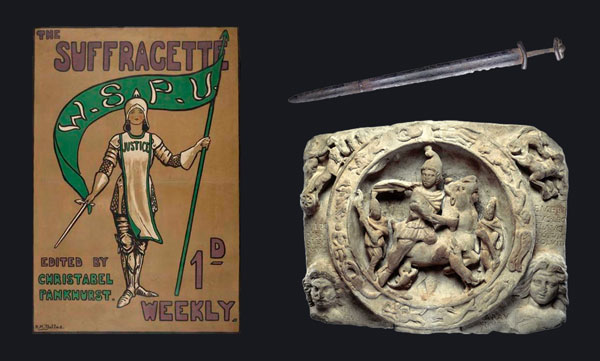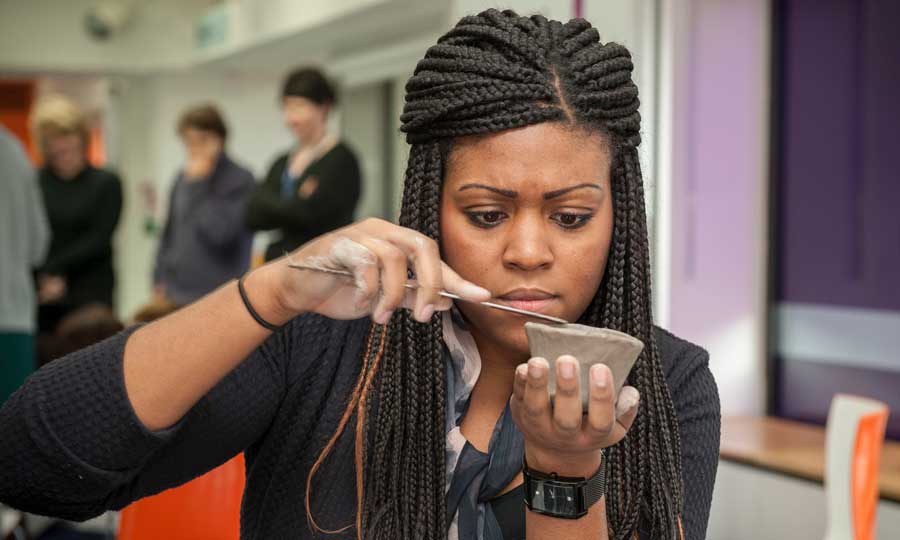Limehouse and Lunar New Year
Did you know that Limehouse, in East London, was known as London’s first China Town or Huabu (华埠) ? Find out all about it here.
Setting sail
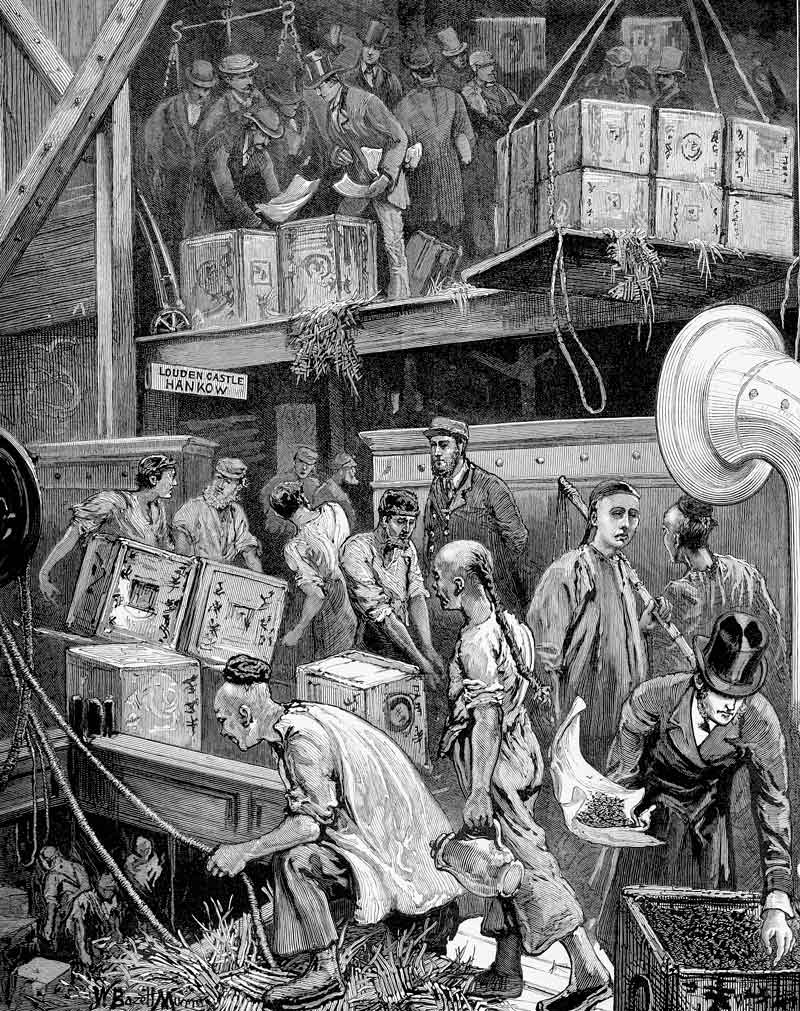
The arrival of Loudoun Castle at the London Dock
Published in December 1877.
At the start of the 19th century, Chinese sailors recruited by British shipping companies came to Britain and lived around the docks in London, Cardiff, Liverpool and Bristol.
Chinese sailors arriving in London would often stay in the Docklands until they could find work on another ship. Some found jobs as day labourers on the docks. These workers were hired on a day-by-day basis to load and unload ships as needed. Work was never guaranteed and depended on the number of ships entering and leaving the dock each day.
Some of these sailors settled permanently in London.
Take a look at this engraving from the Illustrated London News.
- Do you know what an engraving is?
- What can you see?
- How would you describe this scene?
- Does it look like the work is shared fairly?
- What does this tell you about the way the dock workers and sailors were sometimes portrayed?
Activity
- Imagine you are a sailor who has travelled far away. Write a letter to your family back home. What new things have you seen, who have you met and what do you think of London?
A growing community
By the 1880s, Limehouse was home to Chinese businesses such as shops, restaurants and laundries.
Chinese women began to arrive in Britain in the 1920s. Most of them were employed by English families as ‘amahs’, a role which involved performing a range of household tasks including cleaning and looking after children.
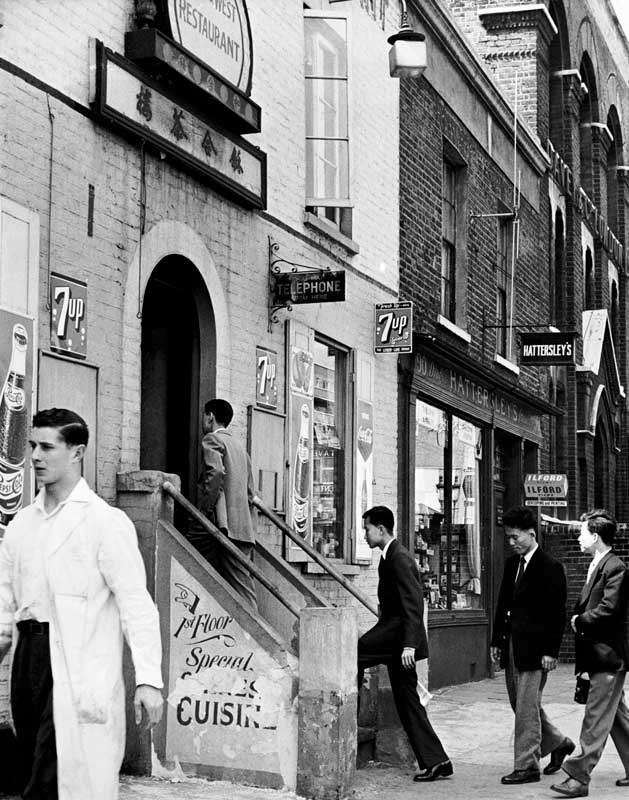
East & West Chinese Restaurant in Limehouse: 1955
© Henry Grant Collection/Museum of London.
From the 1960s, more Chinese women travelled to unite with family members who came to London before them. However, Chinese people were not always welcomed and were sometimes treated badly.
The Chinese community lived in two areas in Limehouse. People from the Shanghai area lived in Pennyfields, Amoy Place and Ming Street, and those from Southern China lived in Limehouse Causeway and Gill Street.
Chinese schools and other organisations were set up to help Chinese people adapt to life in London. These helped to create a space of safety and security away from the racism that many Chinese people faced. Schools also helped the community stay connected to their culture.
Activity
- Find a map of Limehouse.
- Can you spot any streets with Chinese names?
- If you live in this area, why not go for a walk and see if you can find any?
A personal story
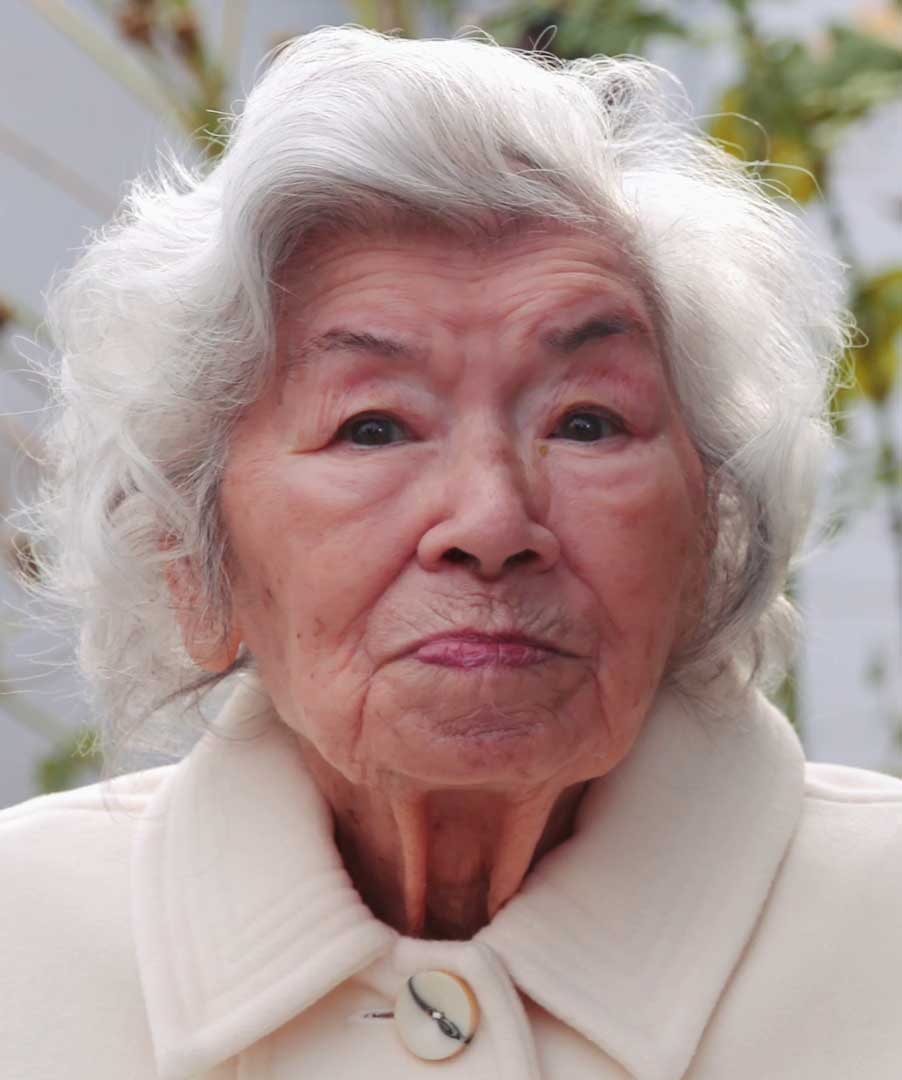
Connie Hoe
From an interview in 2020.
Connie Hoe was born in Limehouse in 1922. Her father was Chinese and the family ran a shop in the area. Connie was interviewed in 2004 about her memories of being a child in Limehouse.
- ‘In those days the children used to be sent out into the street to play because these small houses, the families didn’t have one house, one family. They had two rooms for one family and one house would have two families… And instead of going out to play, they used to come into our shop and congregate. When they were at school, the mothers used to come in and used our shop as a sort of chatting room. So consequently, we knew everybody and we knew everybody’s gossip.’
— Connie Hoe, from an oral history collected as part of ‘Memories of the Genuine Children of Limehouse Chinatown’ project, London Metropolitan Archives
Activity
- Imagine you have travelled back in time to Limehouse in the 1920s.
- What do you think it would be like?
- How would it differ from your life today?
Change and Chinatown
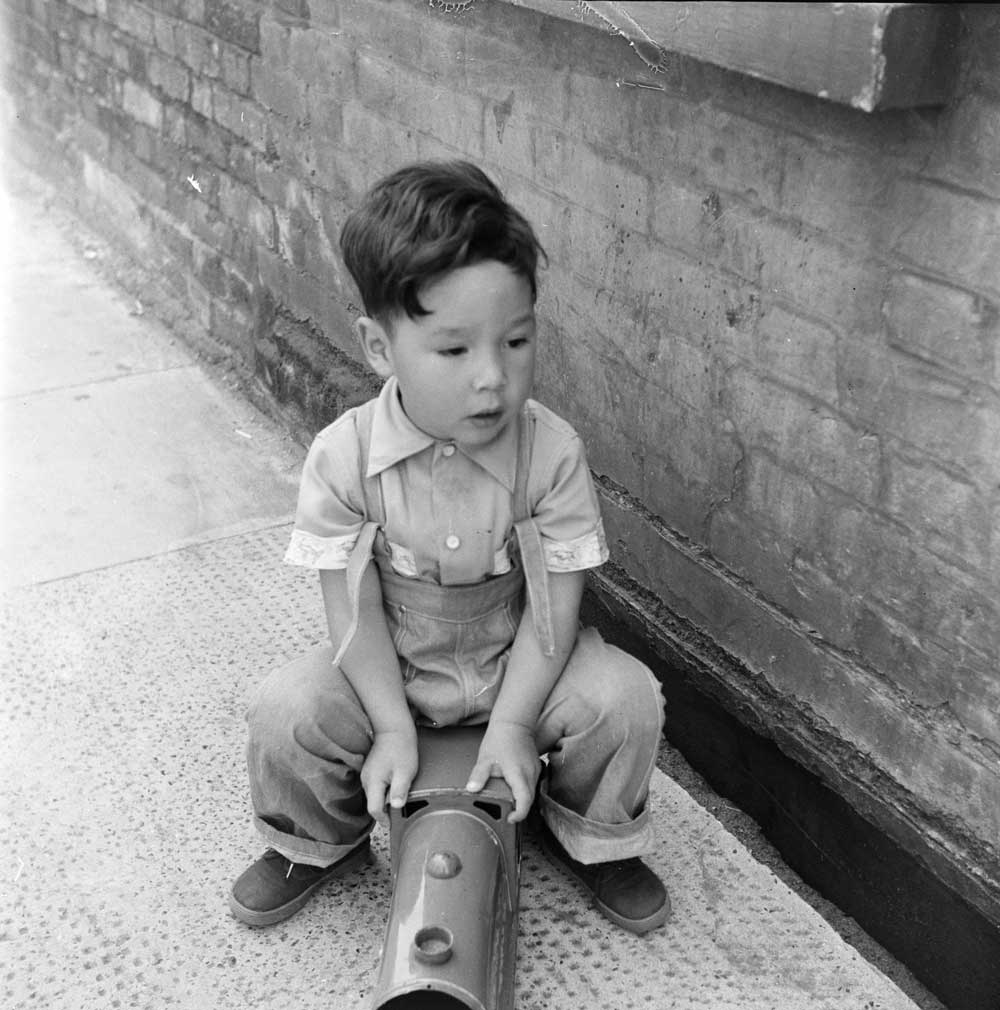
Boy playing with a toy train on a street in Limehouse in the mid-1950s
© Henry Grant Collection/Museum of London.
Sadly, overcrowded neighbourhoods in the 1930s and bomb damage from the Second World War caused large numbers of the Chinese community to leave the area. Around the same time, another Chinese community was growing in Soho in the West End of London. More people moved from Hong Kong and China and from other parts of East Asia and began to start businesses in the area now known as Chinatown. Have you ever been here? What did you see and do?
Chinese people in Limehouse continued to celebrate Lunar New Year, also now known as the Spring Festival in China (Chunjie 春节). Lunar New Year is celebrated across many countries including Korea (Solnal) and Vietnam (Tết). The celebration begins with the first new moon of the lunar calendar, which is based on cycles of the moon.

Wishes for Lunar New Year
At the Museum of London Docklands.
Activity
- Look at this photo of families writing wishes for the Lunar New Year at our annual festival.
- What are your wishes for Lunar New Year?
Lunar New Year quiz
Do you know the answers to these questions about Lunar New Year?
If not, see if you can find the answers at home or online.
- How long is Lunar New Year?
- What is the Lantern Festival?
- What foods are traditionally eaten during Lunar New Year?
- What do people celebrating Lunar New Year put in a red envelope, and why?
Craft activities
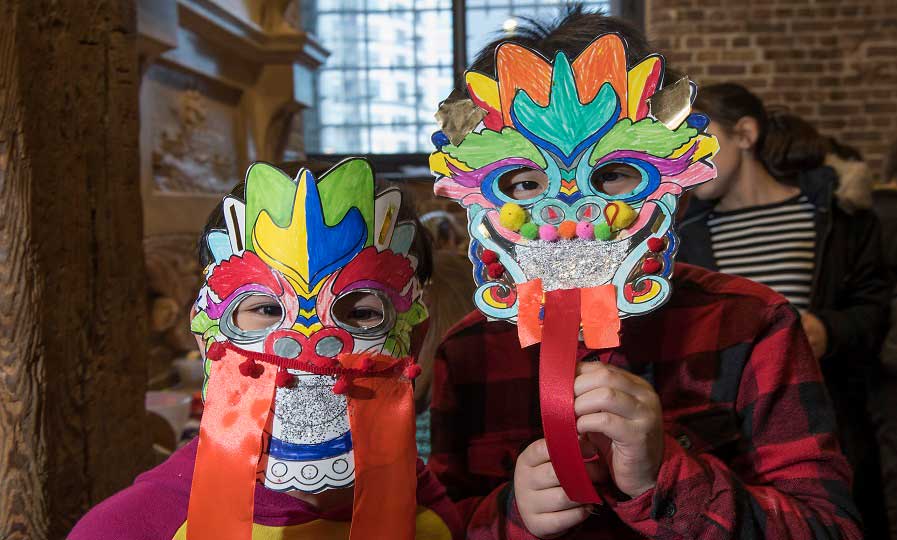
Homemade dragon masks
Can you make a mask as colourful as this?
Why not try some fun craft ideas to celebrate Lunar New Year?
- Make a collage of a blossom tree using red, pink and brown paper
- Learn how to make your own Lunar New Year lantern in this short film
- Add red food colouring to playdough to make your own lucky red playdough. Can you shape it into any of the animals of the Chinese Zodiac – how about a rat, tiger or pig?








